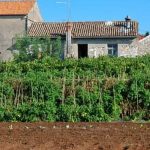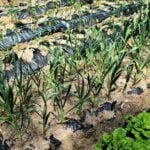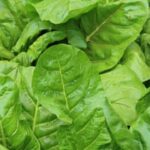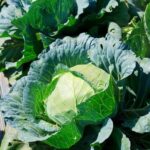Are you interested in starting a vegetable garden but don’t have the space for a traditional in-ground plot? Look no further than vegetables in pots for gardening. This method of growing vegetables offers numerous benefits and unparalleled convenience for both beginner and experienced gardeners. Whether you have limited outdoor space, poor soil quality, or simply want to enjoy fresh produce right outside your doorstep, potted vegetable gardening is an excellent option to consider.
One of the great advantages of growing vegetables in pots is the ability to control various environmental factors such as sunlight, soil quality, and moisture levels. This makes it easier to cater to the specific needs of different types of vegetables and create an ideal growing environment. From tomatoes and peppers to lettuce and herbs, there are numerous vegetable options that thrive in pots, making it possible to grow a diverse range of produce right on your patio or balcony.
In addition to the flexibility in plant selection, potted vegetable gardening also allows for easier maintenance and care. Whether you’re dealing with pests or simply need to move your plants around for better sunlight exposure, the adaptability of potted gardens makes it simpler to address these challenges.
With the right guidance on choosing the best vegetables, pots, soil mix, watering techniques, pest control methods, and ongoing maintenance tips, you can set yourself up for success as a potted vegetable gardener. Stay tuned as we explore all these essential aspects and more in this comprehensive guide to growing vegetables in pots for gardening.
Choosing the Right Vegetables
When it comes to growing vegetables in pots for gardening, choosing the right vegetables is crucial for success. Not all vegetables thrive in containers, so it’s essential to select varieties that are well-suited for pot cultivation. There are several types of vegetables that flourish in pots and have specific requirements that make them ideal for container gardening.
Leafy Greens
Leafy greens such as lettuce, spinach, kale, and Swiss chard are excellent choices for growing in pots. These vegetables have shallow root systems, making them well-suited for containers with limited space. They also prefer cooler temperatures, making them perfect for growing on patios or balconies.
Tomatoes and Peppers
Tomatoes and peppers are popular choices for potted vegetable gardens. These plants require ample sunlight and well-draining soil to thrive. Compact or dwarf varieties of tomatoes and peppers are particularly suitable for container gardening as they can be grown in smaller pots.
Root Vegetables
Root vegetables like carrots, radishes, and beets can also be grown in pots, provided that the container is deep enough to accommodate their root growth. It’s important to choose shorter or round varieties of these vegetables that are better suited for containers.
By selecting the right vegetables and considering their specific requirements, gardeners can enjoy a bountiful harvest of fresh produce from their potted vegetable gardens. With proper care and attention to the unique needs of each plant, container gardening can be a rewarding and successful endeavor.
Selecting the Best Pots
When it comes to growing vegetables in pots for gardening, selecting the right pots is crucial for the success of your plants. There are various options available when it comes to choosing pots for your potted vegetable garden, each with its own advantages and considerations.
Materials
One of the first decisions you’ll need to make when selecting pots for your potted vegetable garden is the material. Common options include plastic, clay, ceramic, wood, and even fabric. Each material has its pros and cons in terms of durability, insulation, and water retention. For example, plastic pots are lightweight and retain moisture well, while clay pots are porous and allow for better aeration but can dry out quickly.
Sizes
The size of the pot is another important consideration when growing vegetables in pots for gardening. The size of the pot will depend on the specific needs of the vegetable you’re planting. Larger plants such as tomatoes or peppers will require larger pots to accommodate their root systems, while smaller plants like herbs or lettuce can thrive in smaller containers.
Drainage Considerations
Proper drainage is essential for potted vegetables to thrive. Without adequate drainage, plants can suffer from root rot and other issues caused by waterlogged soil. When selecting pots for your potted vegetable garden, be sure to choose containers with drainage holes at the bottom.
If using decorative pots without drainage holes, consider using a separate nursery pot with proper drainage inside the decorative container. Additionally, using a layer of gravel or broken pottery at the bottom of the pot can help improve drainage.
By carefully considering the materials, sizes, and drainage considerations when selecting pots for your potted vegetable garden, you can create an optimal environment for your vegetables to grow and thrive. Each choice you make will impact how well your vegetables grow in their container environment.
Soil and Fertilizer
When it comes to growing vegetables in pots for gardening, the right soil mix is essential for the success of your plants. The ideal soil mix for potted vegetables should have good drainage and aeration while retaining enough moisture for the plants to thrive. A common recommendation is to use a mixture of potting soil, compost, and perlite or vermiculite to ensure proper balance.
It’s important to choose high-quality potting soil that is specifically formulated for container gardening. This type of soil is typically lighter and provides better drainage than traditional garden soil, which is crucial for preventing waterlogged roots and promoting healthy plant growth. Additionally, adding compost to the soil mix can improve its nutrient content, providing essential organic matter and micronutrients that are beneficial for vegetable plants.
In addition to the right soil mix, fertilizing potted vegetables is essential for keeping them nourished throughout their growing season. Slow-release granular fertilizers are often recommended for potted plants, as they provide a steady supply of nutrients over an extended period. Alternatively, liquid fertilizers can be applied more frequently to ensure that the plants receive the necessary nutrients for optimal growth and production.
By using the right soil mix and providing adequate fertilizer, you can create an optimal growing environment for your potted vegetables, allowing them to thrive and produce healthy, bountiful harvests. With proper care and attention to soil and fertilizer needs, you can enjoy the rewards of a successful container vegetable garden.
Watering and Sunlight
When it comes to growing vegetables in pots for gardening, proper watering and sunlight exposure are essential factors for the success of your plants. Vegetables, just like any other plant, require specific care and attention to thrive in a container environment. In this section, we will delve into the importance of providing the right amount of water and sunlight for your potted vegetables, as well as tips on how to achieve optimal growing conditions.
Watering your potted vegetables is crucial for their growth and overall health. Since containers have limited soil volume, they tend to dry out more quickly than traditional garden beds. It’s important to maintain consistent moisture levels in the soil to prevent stress on the plants.
One effective method is to water thoroughly until you see drainage occurring at the bottom of the pot. This ensures that the roots receive adequate hydration without becoming waterlogged. Additionally, be mindful of environmental factors such as temperature and humidity, as they can also influence the watering needs of your potted vegetables.
In addition to proper watering, providing adequate sunlight is vital for the development of potted vegetables. Most vegetable plants require a minimum of six hours of direct sunlight per day for optimal growth. Be sure to place your pots in a location that receives ample sunlight and rotate them regularly if necessary to ensure even exposure.
Keep in mind that some leafy greens and herbs may tolerate partial shade, but most fruiting vegetables such as tomatoes and peppers thrive in full sun. By paying attention to these key factors, you can create an ideal environment for your potted vegetable garden to flourish.
Pests and Disease Control
- Common Pests: Some of the most common pests that can affect potted vegetable plants include aphids, spider mites, caterpillars, and whiteflies. These pests can cause damage to the plants by feeding on their leaves or transmitting diseases. To prevent infestations, regularly inspect your plants for any signs of pest activity. If pests are detected, consider using natural remedies such as neem oil, insecticidal soap, or introducing beneficial insects like ladybugs to control the pest population.
- Disease Control: Potted vegetable plants are susceptible to diseases such as powdery mildew, damping-off, and root rot. To minimize the risk of disease outbreaks, it is essential to provide proper air circulation and avoid overwatering. Additionally, using sterilized potting mix and practicing crop rotation can help prevent the spread of diseases from one season to another.
- Companion Planting: One effective method for controlling pests and diseases in potted vegetable gardens is companion planting. By strategically choosing companion plants that repel pests or attract beneficial insects, you can create a more balanced ecosystem within your garden. For example, planting marigolds alongside your vegetables can help deter nematodes and other harmful insects.
By being proactive and implementing these preventive measures, you can maintain healthy potted vegetable plants and minimize the impact of pests and diseases on your garden harvest. Remember that early detection and intervention are key to successful pest and disease control in container gardening.
Harvesting and Maintenance
When it comes to harvesting potted vegetables, timing is key. Knowing when to harvest your vegetables will ensure that they are at their peak ripeness and flavor. Different types of vegetables have different indicators that signal they are ready for harvesting. Here are some guidelines for popular vegetables in pots for gardening:
- Tomatoes: They should be firm and fully colored.
- Carrots: The tops will start to push through the soil when they are ready.
- Peppers: Wait until they reach their full size and change color.
In terms of ongoing care, it is important to continue providing the proper environment for your potted vegetables to thrive. This includes regular watering and making sure they receive adequate sunlight. Additionally, monitoring for pests and diseases is crucial in maintaining the health of your plants. Using organic pest control methods can help keep your potted vegetable garden free from harmful insects without compromising the safety of your produce.
Successful potted vegetable gardens require diligent maintenance, but the rewards are well worth it. By staying on top of harvesting and care, you can enjoy a steady supply of fresh, homegrown produce right from your own patio or balcony. With the right knowledge and techniques, anyone can successfully grow a variety of delicious vegetables in pots for gardening.
Success Stories and Tips
In conclusion, growing vegetables in pots for gardening offers numerous benefits and conveniences. It allows individuals with limited outdoor space to still enjoy the tastes of freshly grown produce. Additionally, potted vegetable gardens can be easily placed on patios, balconies, or even indoors, making it accessible to a wider range of gardeners.
When choosing the right vegetables for pot gardening, it is crucial to consider their specific requirements and growth habits. Some popular options include tomatoes, peppers, lettuce, and herbs. These vegetables thrive in containers as long as they receive adequate sunlight and nutrients. The type of pot chosen also plays a significant role in the success of a potted vegetable garden. Ensure that the pots have proper drainage and are large enough for the plant’s roots to grow comfortably.
Successful potted vegetable gardens require proper soil mix, regular watering, and pest control measures. Fertilizing the plants with organic or slow-release blends will help them flourish throughout the growing season. With the right care and attention, anyone can enjoy a bountiful harvest from their potted vegetable garden while reaping the rewards of their efforts.
Frequently Asked Questions
Which Vegetables Are Best to Grow in Pots?
Vegetables that are best to grow in pots are those that don’t require a lot of space for their roots to spread out. Examples include cherry tomatoes, lettuce, peppers, radishes, and green onions.
What Vegetables Can You Plant Together in Containers?
When planting vegetables together in containers, it’s important to consider their individual needs for water, sunlight, and nutrients. Some vegetables that can be planted together in containers include lettuce with radishes or carrots, and tomatoes with basil or peppers.
What Is the Best Container for a Vegetable Garden?
The best container for a vegetable garden is one that provides enough room for the plant’s root system and has good drainage. Options include plastic or terra cotta pots, wooden crates, or fabric grow bags – all depending on the specific needs of the vegetables being grown.

If you’re looking to get into vegetable gardening, or are just looking for some tips on how to make your current garden better, then you’ve come to the right place! My name is Ethel and I have been gardening for years. In this blog, I’m going to share with you some of my best tips on how to create a successful vegetable garden.





